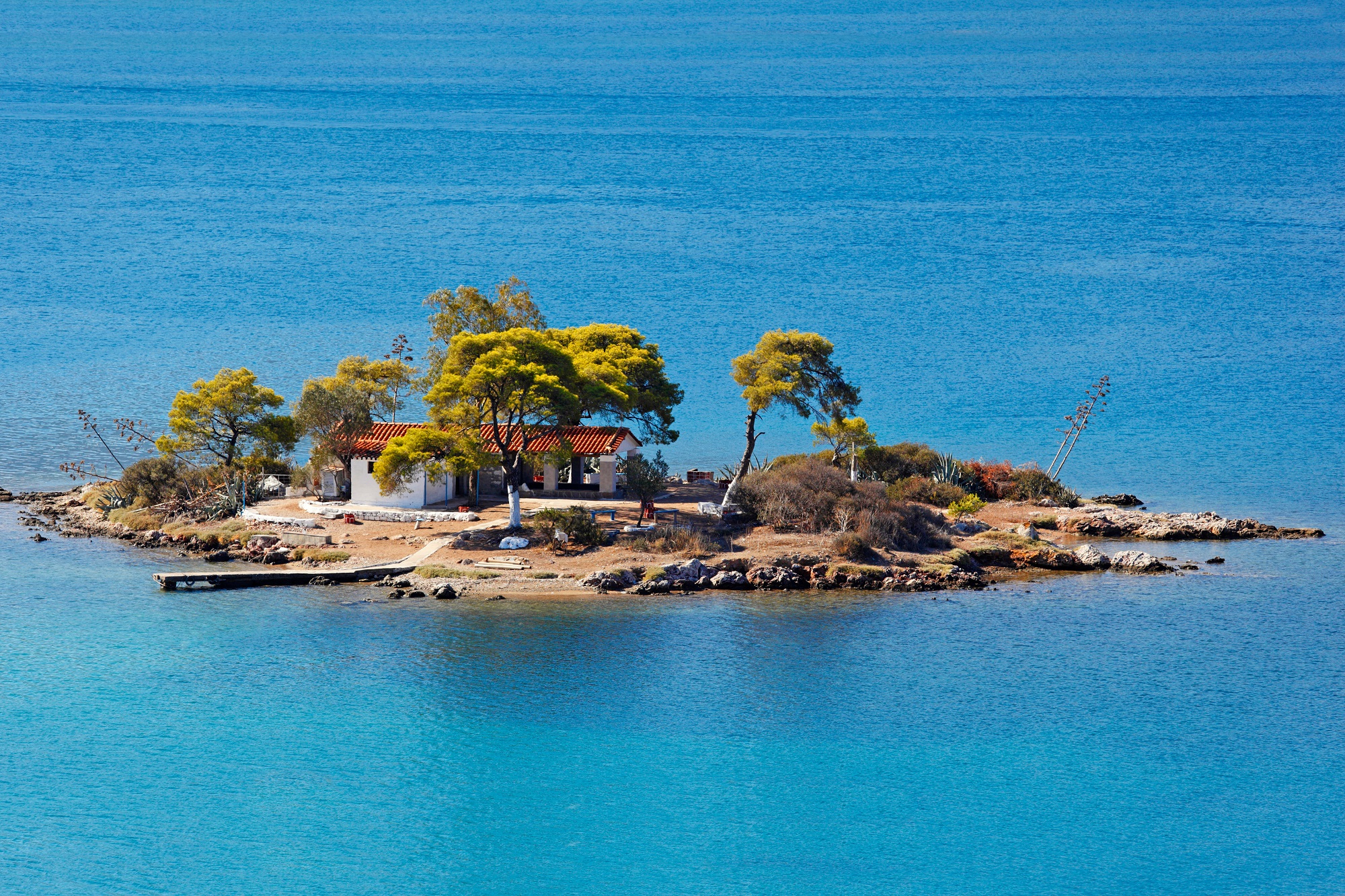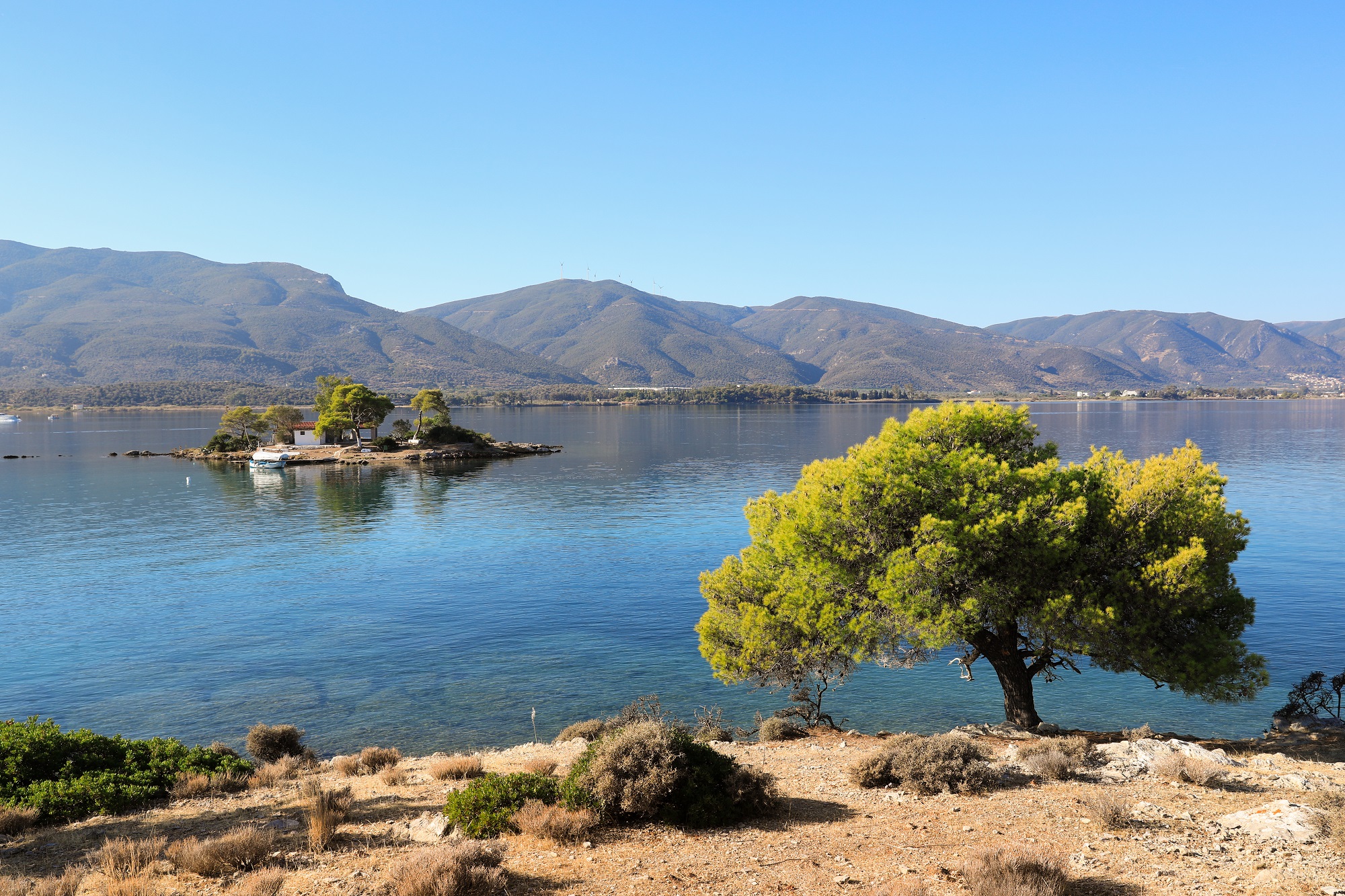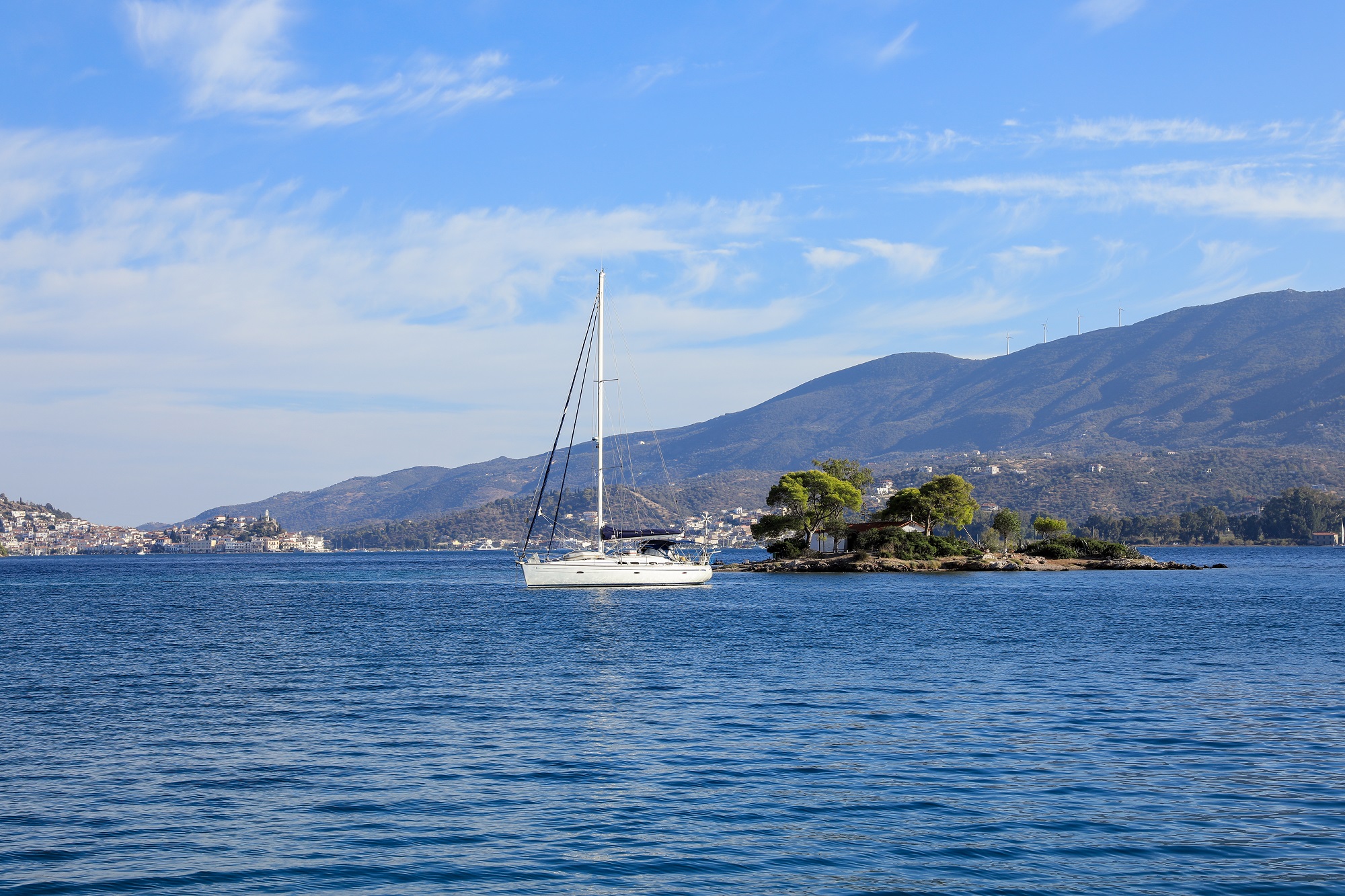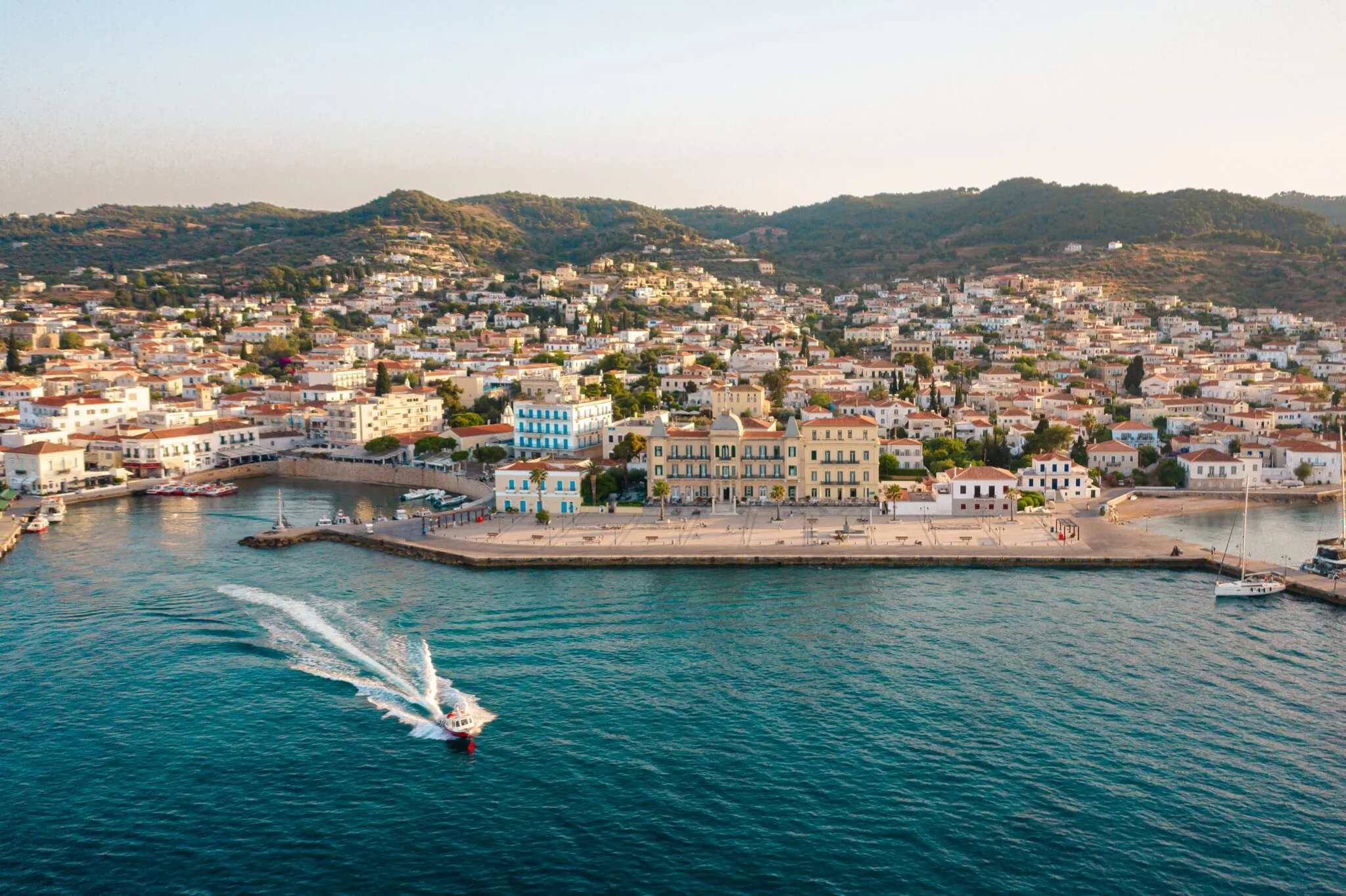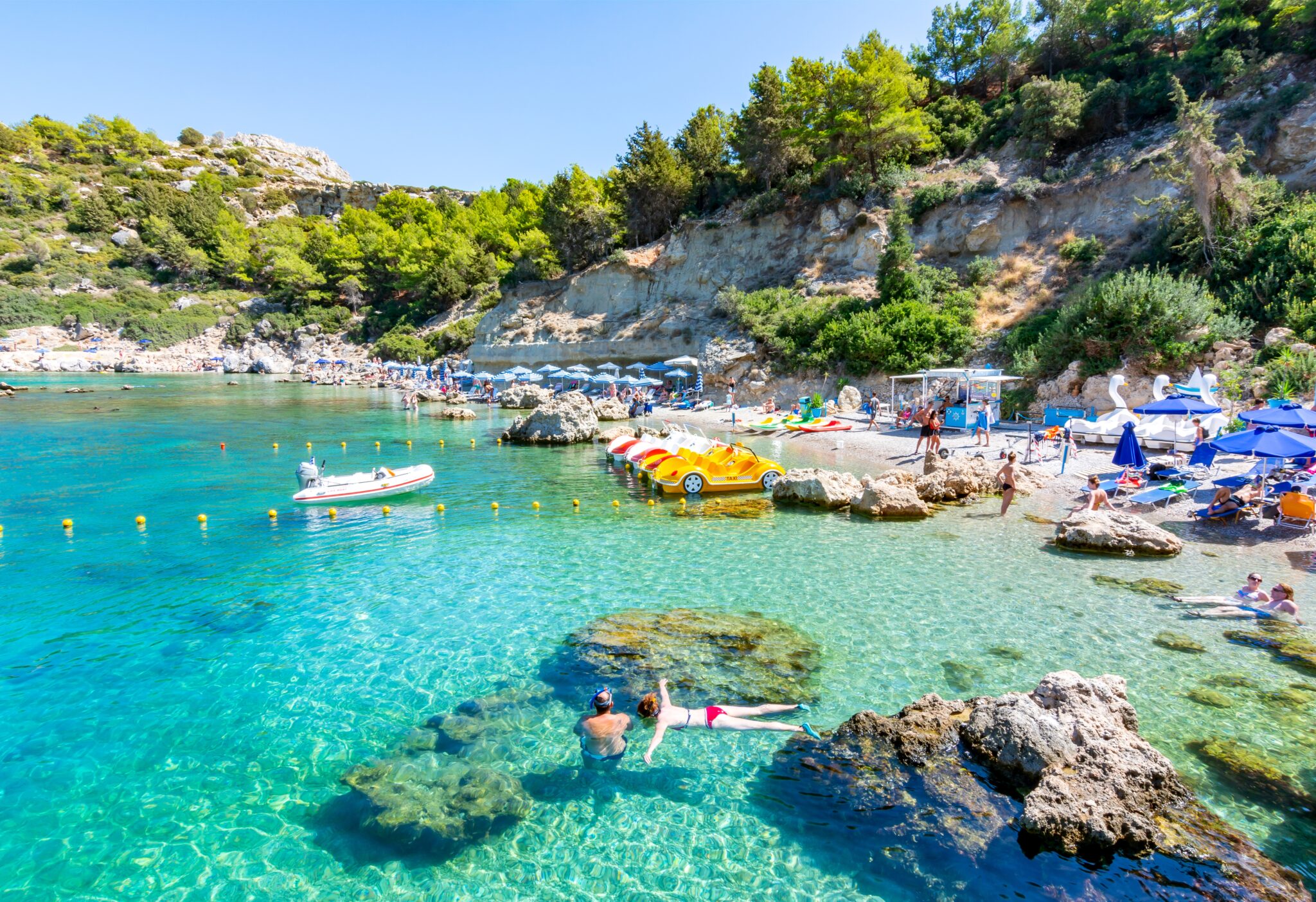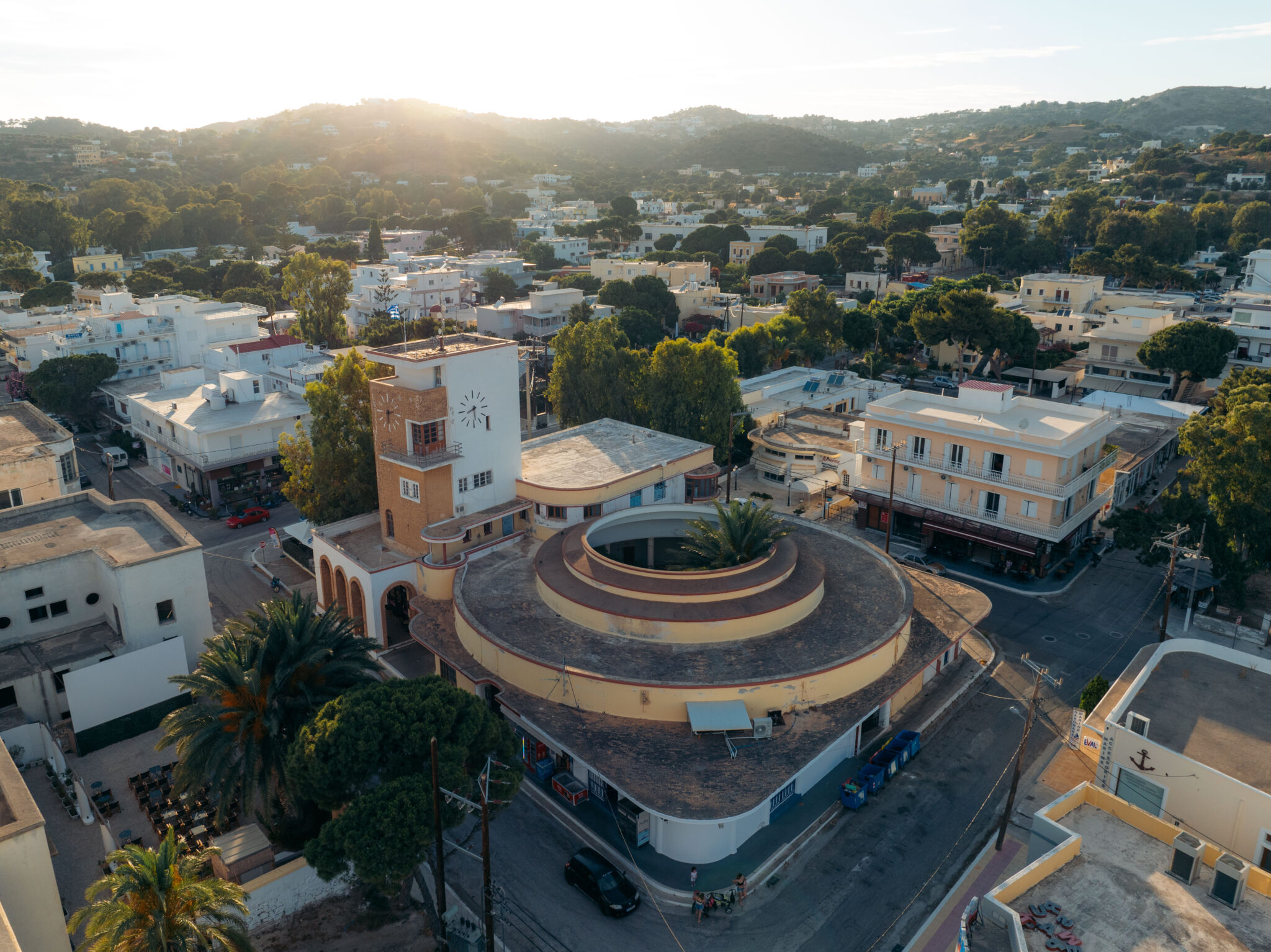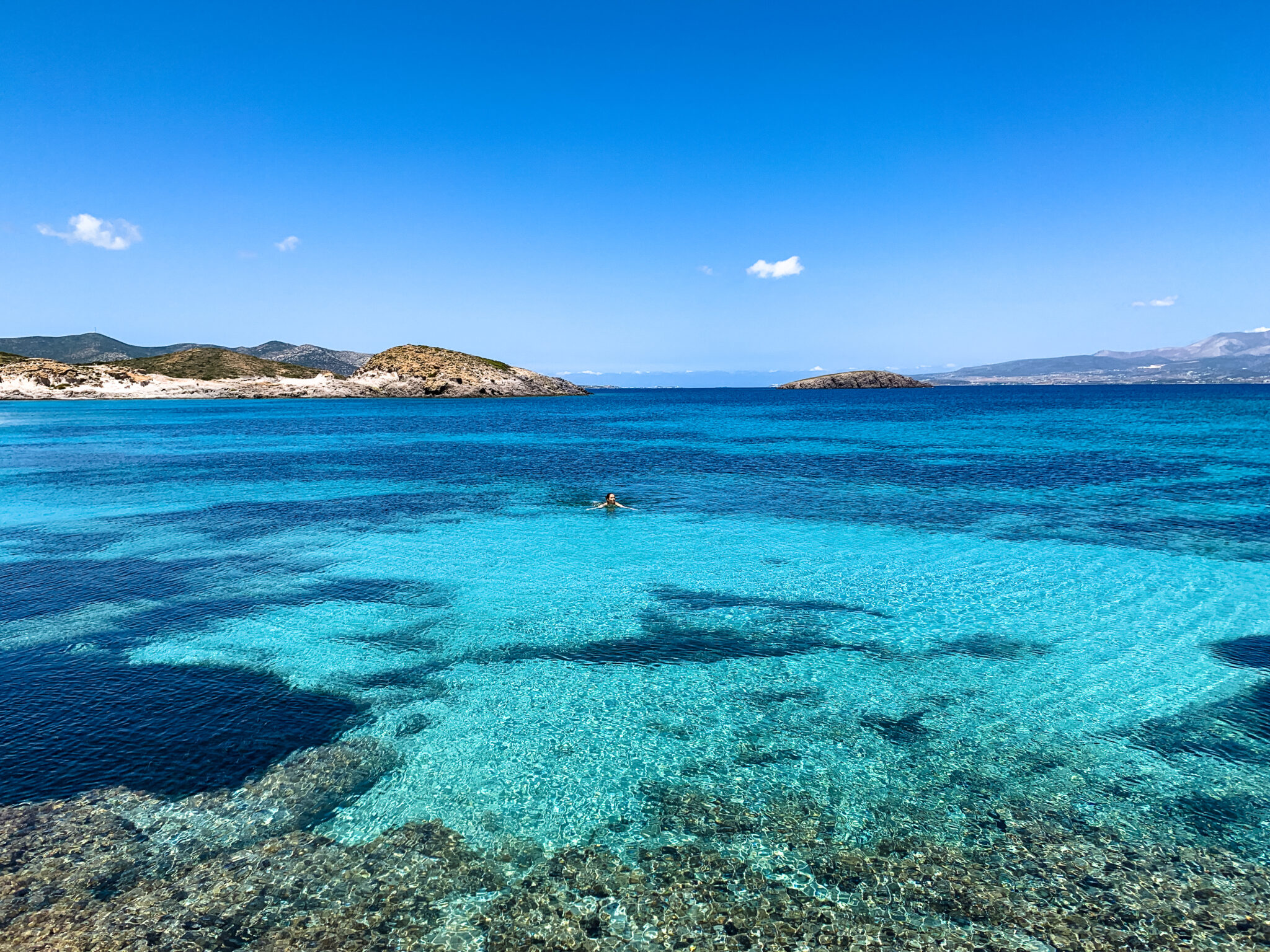The picturesque chapel and turquoise waters at Eros, in the Saronic Gulf, have turned the islet into a destination for couples desiring a wedding ceremony at an idyllic location.
Tiny and uninhabited, the islet Eros is paying homage to the ancient Greek god of love – responsible for its latest name, which has prevailed over the past couple of decades – by having established itself as a destination for couples desiring to stage their wedding ceremonies at an idyllic location, alongside turquoise waters. The Greek islet is now synonymous with weddings.
The islet, whose shape, from a bird’s eye view, is said to resemble a heart, is situated in the Saronic Gulf, opposite the western side of Poros, just off this bigger island’s Russian Dockyard gulf area with a sandy beach and pine forest.
The Russian Dockyard area was given its name following what became known as the Orlov events, when, in 1770, vessels of the Russian fleet, under the command of Russian admiral Alexey Orlov, arrived at the location with the aim of prompting the Greeks to revolt against the ruling Ottoman Empire. Orlov’s admiralty was established at this location. It included storage facilities, a kitchen and supporting buildings. The Russians maintained ownership of the dockyard following the eventual establishment of the modern Greek state, in 1830, keeping a guard there until 1900, when the area’s ownership was transferred to Greece.
For over a century, the islet opposite the Russian Dockyard area was known as Daskalio, both by locals and officially. According to some sources, this name, meaning school, was derived from the belief that a secret Greek school existed on the islet during Ottoman times. However, no historical proof of the school’s existence has ever been found.
Therefore, given the fact that the same name, Daskalio, has been used for many other islets around Greece, Eros island’s previous name is most likely due to a corruption of the Italian word “scoglio” that was used by the Venetians to mark reefs and islets on maps, along with the preposition “da”. Over time, the islet’s name, sounding like “dascolio”, became Daskalio.
It should also be pointed out that, according to another version of the story, preserved by local legend, a nun named Francesca lived in the area prior to the Greek Revolution of 1821 and taught girls of the region the art of weaving. The chapel on the islet, referred to by locals as “Panagitsa”, an affectionate referral to the Virgin Mary, was built at some point during the 19th century. It is dedicated to the Dormition of the Mother of God.
The island’s latest name, Eros, has prevailed since 2002, when it was officially used by the Greek National Tourism Organisation, EOT, for an advertising campaign abroad, its content including the wedding islet. This campaign has been credited for initiating the island’s use for wedding ceremonies and, later on, baptisms, by locals and visitors from abroad. This ceremony reputation has grown even stronger over recent years.
The islet had already experienced some glory long before the influential EOT campaign when, in 1960, film director Roviros Manthoulis filmed scenes for his comedy “Kyria Dimarchos” (Mayoress), starring Georgia Vasiliadou, on the islet.
The islet is owned by Lisa Vanderpool-Evert, the widowed wife of former New Democracy party leader Miltiadis Evert, despite the fact that the chapel on the islet operates through the Agios Konstantinos and Agia Eleni parish.
The islet may only be reached by boat, either upon arrangement with your hotel, or from the port of Poros (€3 per person). Persons wishing to stage their wedding ceremony or baptisms on the islet are advised to contact local ceremony organisers on Poros, who will arrange all the details, including boat transport for guests.
Read also:
Sheltered Kallithea market offering quality Greek products half an hour from heart of Athens
Homemade sweets and traditional pies in a beautiful café “hanging” from a mountain
Kato Nevrokopi, Drama: the coldest town in Greece – often likened to Siberia



